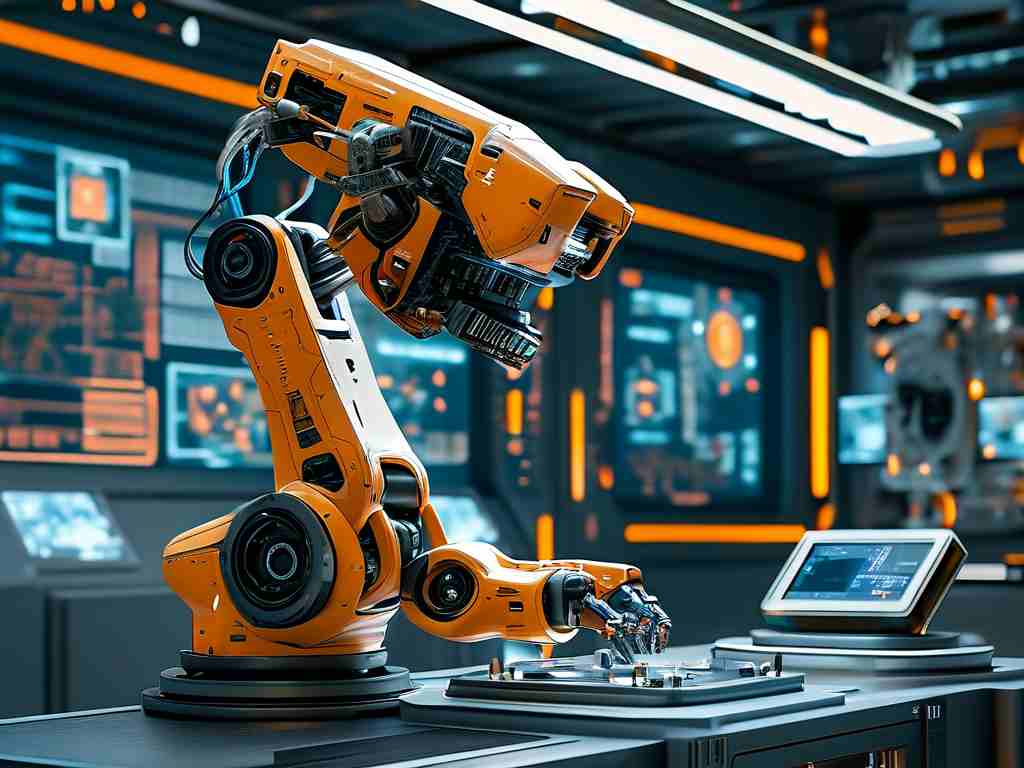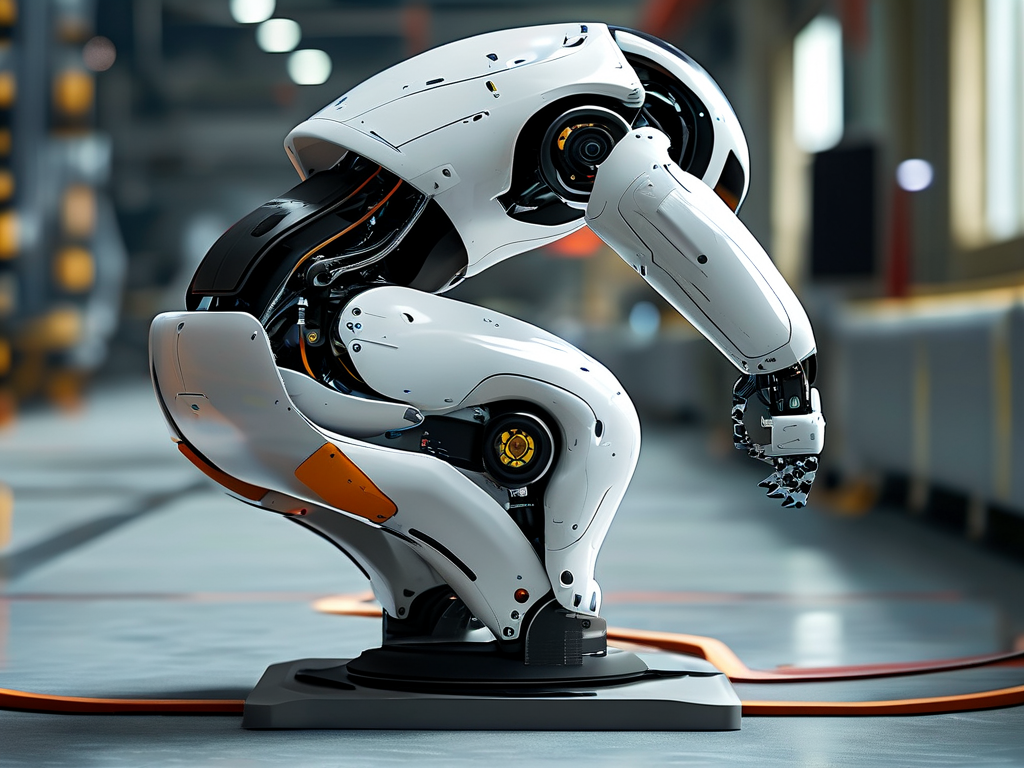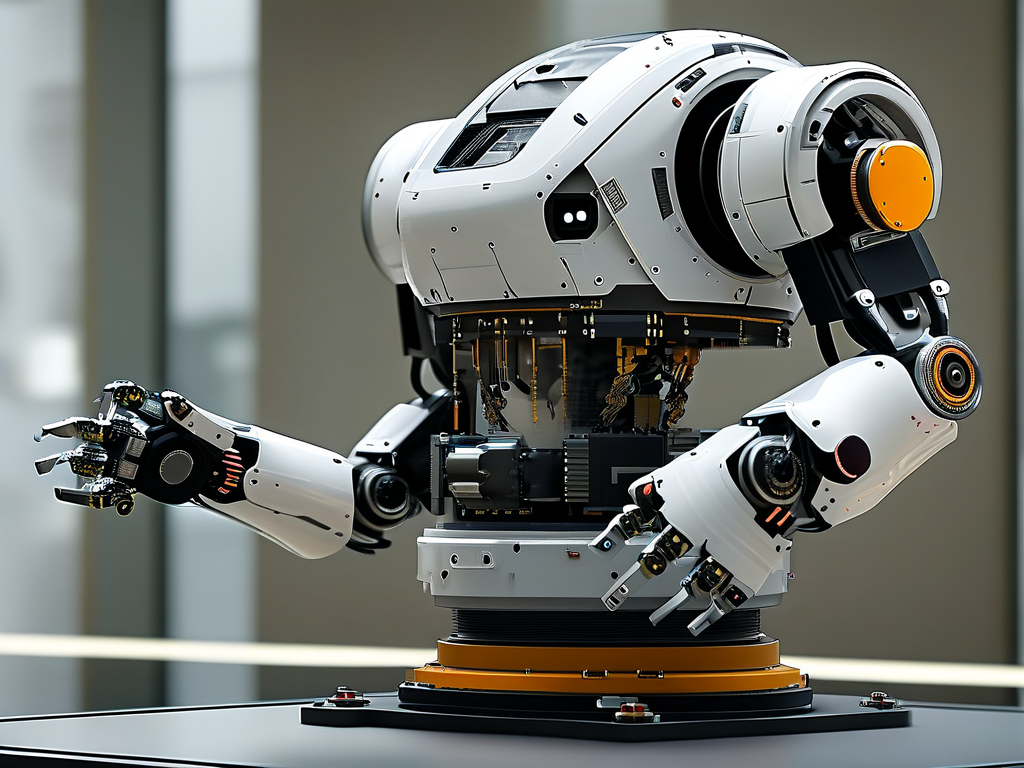In modern industrial manufacturing, robotic glue dispensing technology has become a cornerstone for achieving precision and efficiency. This advanced method combines motion control systems, material science, and intelligent programming to deliver consistent adhesive application across diverse production scenarios. Unlike traditional manual operations, robotic systems eliminate human error while adapting to complex geometric patterns with micron-level accuracy.

Core Technical Framework
The operational principle of robotic glue dispensing revolves around three interconnected modules: positioning systems, fluid dynamics controllers, and path-planning algorithms. High-resolution vision sensors first capture workpiece dimensions, transmitting spatial coordinates to the robotic arm's central processing unit. Simultaneously, pressure regulators maintain optimal viscosity levels in adhesive materials, compensating for temperature-induced variations.
A critical innovation lies in closed-loop feedback mechanisms. Force-torque sensors embedded in dispensing nozzles continuously monitor extrusion pressure, automatically adjusting flow rates when detecting substrate surface irregularities. For instance, when applying sealants on curved automotive panels, the system dynamically recalculates nozzle trajectories to ensure uniform bead thickness despite fluctuating contact angles.
Programming Architecture
Modern glue dispensing robots employ hybrid programming models combining offline simulation and real-time adaptation. Engineers predefine application paths using CAD/CAM software, which generates machine-readable G-code. However, on-site calibration remains essential – laser scanners verify workpiece positioning offsets as small as 0.02mm before initiating the dispensing cycle.
An emerging trend involves AI-powered anomaly detection. Deep learning algorithms analyze historical process data to predict potential defects like air bubbles or incomplete coverage. During battery pack encapsulation for electric vehicles, such systems can interrupt operations within 15 milliseconds if detecting abnormal pressure drops, preventing material waste.
Material Compatibility Innovations
Advanced dispensing systems now accommodate materials ranging from UV-cured acrylates to thermally conductive epoxies. Dual-component mixing nozzles with helical static elements achieve 99.8% homogeneity for resins requiring precise catalyst ratios. In aerospace applications, this enables reliable bonding of composite wing sections while meeting strict flammability standards.
Temperature-controlled reservoirs represent another breakthrough. For silicone-based adhesives requiring 35±0.5°C maintenance, Peltier-effect thermal modules adjust material viscosity in real time. This proves crucial when sealing medical device housings where overflow prevention is critical.
Industrial Implementation Case
Automotive headlight assembly provides a practical demonstration. Six-axis robots equipped with rotating end-effectors apply butyl rubber sealants along 3D contours at 120mm/s speeds. Vision-guided compensation corrects for mold variations up to 0.3mm, reducing rework rates by 62% compared to manual methods.
The pharmaceutical sector benefits similarly. When dispensing conductive adhesives on glucose sensor electrodes, micro-dot deposition systems achieve 0.01μl accuracy through piezoelectric jetting technology. This nano-scale precision ensures consistent electrical performance across medical diagnostic devices.
Future Development Trajectory
Next-generation systems are integrating augmented reality interfaces. Maintenance technicians can overlay real-time viscosity data via AR headsets during calibration procedures, slashing setup times by 40%. Furthermore, 5G-enabled collaborative robots allow remote process monitoring – a vital feature for multinational manufacturers managing distributed production lines.
Material science advancements will further expand application boundaries. Experimental phase-change adhesives that transition from liquid to solid states under specific electromagnetic frequencies could enable revolutionary assembly techniques. When coupled with multi-robot coordination algorithms, this may facilitate fully automated adhesive bonding processes for microelectronics with sub-10μm feature sizes.
From semiconductor packaging to renewable energy equipment manufacturing, robotic glue dispensing continues redefining industrial adhesion standards. As intelligent sensing and adaptive control systems evolve, this technology will increasingly bridge the gap between mass production flexibility and artisanal precision.









